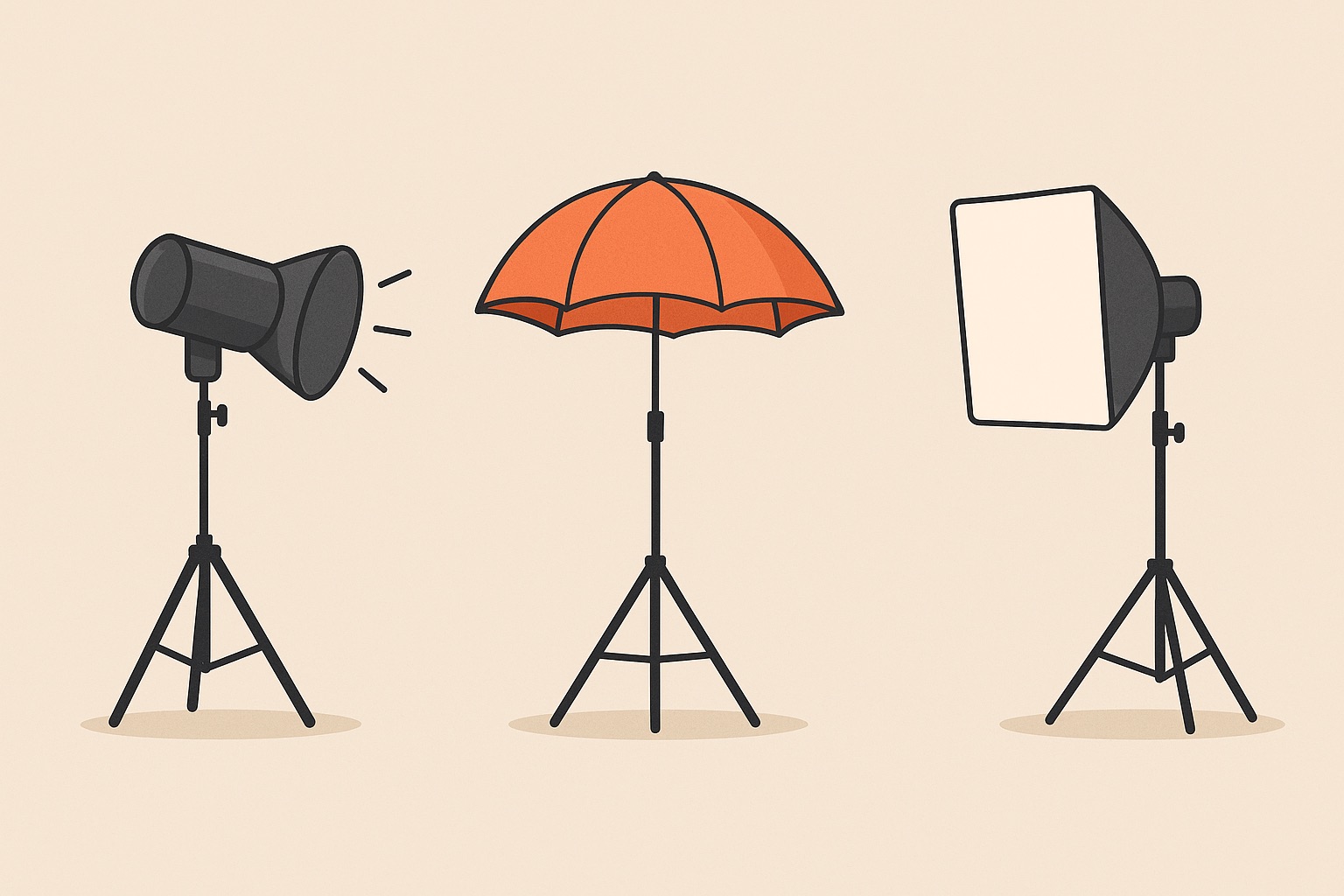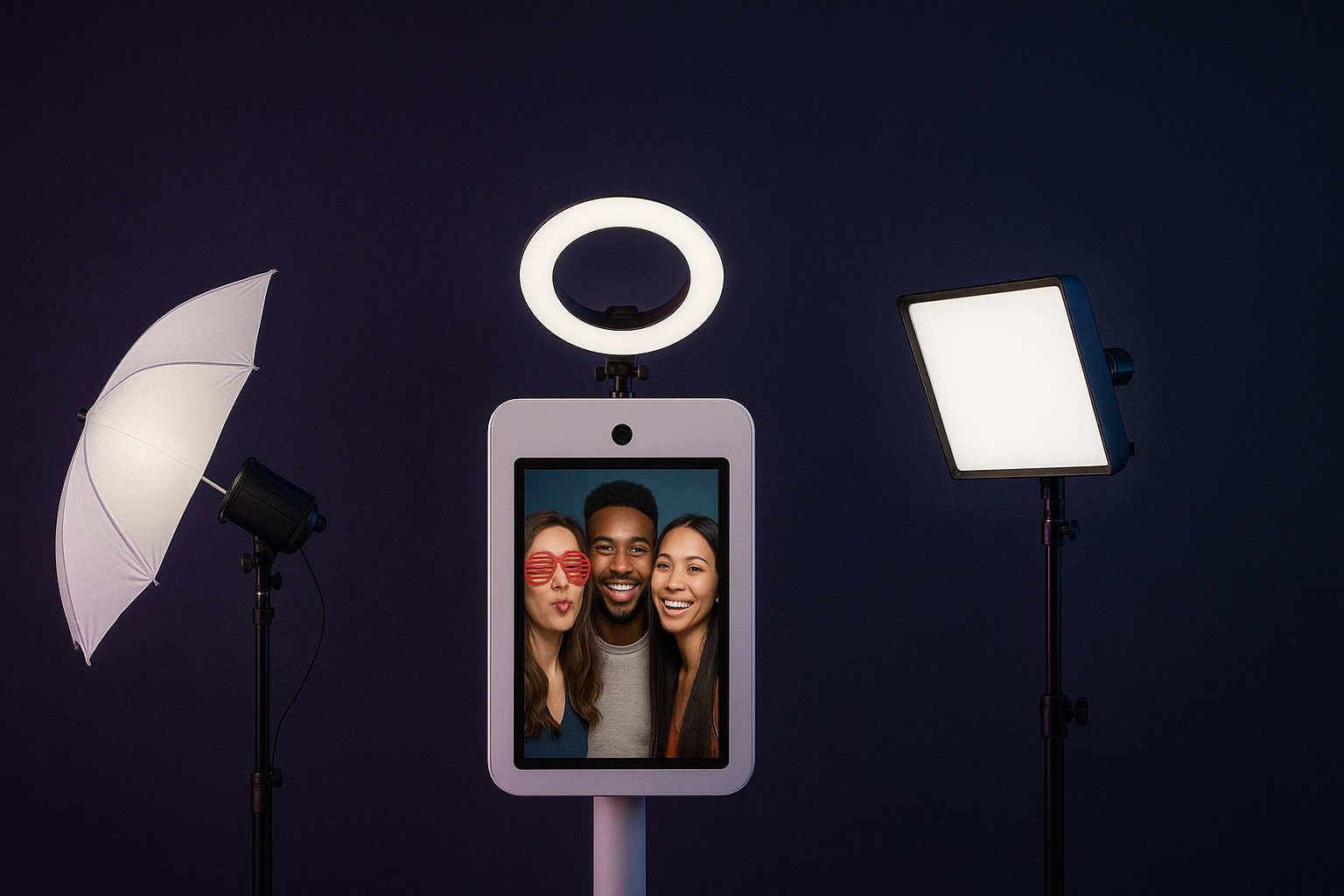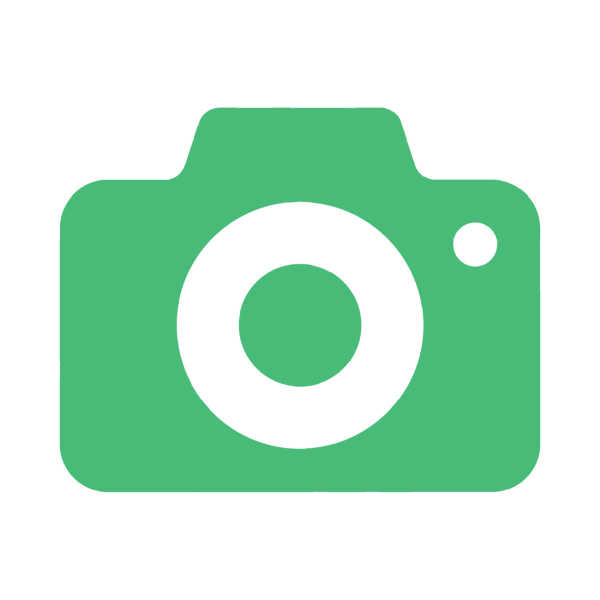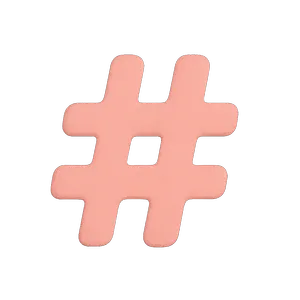The secret to photos people actually want to share is not the camera or the backdrop. It is the lighting.
The best lighting for a photo booth is always soft, diffused, and positioned to kill harsh shadows. This one factor is the difference between flat, unflattering shots and vibrant images that make every single guest look fantastic.
Why Great Lighting Is a Non-Negotiable
Getting the lighting right is easily the most important decision for a photo booth. Think of it as the foundation for the entire guest experience. When the lighting is on point, guests feel more confident, they look better in their photos, and they are way more likely to share the content, giving your brand a natural, organic boost.
This demand for high-quality visuals is a huge reason the industry is booming. The global photo booth market is on track to grow from USD 584.7 million in 2025 to a massive USD 1,427.2 million by 2035. That growth, detailed by Future Market Insights, is fueled by the unstoppable demand for shareable content at both corporate and private events.
The Impact on Photo Quality and Guest Experience
You can spot bad lighting from a mile away. It creates deep, harsh shadows under the eyes and nose, seems to highlight every skin imperfection, and just gives off an amateur vibe. No one is excited to share a photo where they do not look their best.
Great lighting, on the other hand, does the opposite. It smooths skin tones, adds a lively sparkle to the eyes, and makes people pop from the background for a crisp, professional-looking photo. This has a direct and powerful impact on the guest experience. When people see a stunning photo of themselves, their entire perception of the event, and the brand hosting it, gets a major upgrade.
Great lighting makes people feel seen and celebrated. It transforms a simple picture-taking activity into a confidence-boosting experience that leaves a lasting positive impression.
Ensuring Brand Consistency and Professionalism
For any brand activation, consistency is everything. A well-thought-out lighting setup guarantees every photo coming out of your event has the same high-quality, professional feel. This is absolutely critical when user-generated content is flying around social media with your company's logo on it.
Think of it this way: every shared photo is a marketing asset. Inconsistent or poor-quality images are a bad look for your brand. A professional lighting setup ensures every piece of content reinforces a message of quality and attention to detail. Mastering a few photography lighting tips can build a solid foundation for getting these pro-level results.
A video testimonial booth or a virtual event microsite are great ways to promote digital story-collecting, and they become so much more powerful when the lighting is flattering. It encourages more thoughtful, engaging responses from participants, which means better content for your marketing campaigns. When people look good on camera, they are more open to participating and sharing their stories, creating a goldmine of authentic brand advocacy. This is how a simple photo booth setup becomes a strategic tool for driving real ROI from your live events.
Choosing Your Essential Lighting Equipment

Getting your lighting right is where the magic happens, and it all starts with choosing the right equipment. This is about building a reliable, versatile kit that you can count on, whether setting up at a sunny outdoor festival or in a dimly lit ballroom. The lights you choose will single-handedly define the look and feel of every photo.
Your choice boils down to three main types of lights. Each has its own strengths, and knowing when to use which one is key to matching your setup to the vibe of the event.
Continuous LEDs vs. Strobes vs. Ring Lights
Continuous LED Panels are the undisputed workhorses of the event industry. They stay on, which means what you see is exactly what you get. This makes setup a breeze. You can dial in the brightness and position in real-time without constantly taking test shots. Their sheer versatility makes them a go-to for most pros.
Strobes (or Flashes) are all about that powerful, instantaneous burst of light. They excel at freezing motion and delivering ultra-sharp, crisp images. They do require a little more technical know-how to sync up with your camera, but their power can easily overpower even the most challenging ambient light in a venue.
Ring Lights are popular for a good reason. They create a soft, direct light that melts away shadows and produces that iconic circular catchlight in a person’s eyes. They are fantastic for solo portraits or headshots, but they can struggle to light larger groups evenly.
After years of experimenting in the field, we find that for most events, especially with groups or more dynamic setups, two adjustable LED panels give you the perfect blend of control, quality, and ease of use.
Tech Specs That Actually Matter
It is easy to get lost in a sea of technical jargon when comparing gear. There are only three specs that truly impact your final images.
- Power (Lumens/Watts): This is all about brightness. More power gives you more flexibility to shoot in bright spaces or use large light modifiers without the light becoming too dim.
- Color Temperature (Kelvin): This measures how warm (yellow) or cool (blue) the light is. Get lights with adjustable color temperature. Being able to match the venue's ambient lighting is crucial for avoiding weird orange or blue skin tones.
- Color Rendering Index (CRI): This one is critical. CRI tells you how accurately a light source reveals the true colors of your subject. A CRI of 95 or higher is non-negotiable for capturing natural skin tones and making brand colors pop.
This need for adaptable, high-quality gear is not just a preference; it is a market trend. The European photo booth market, for instance, is projected to hit USD 393.31 million by 2028, and that growth is directly tied to the adoption of versatile LED systems. With corporate gigs and weddings making up over 60% of all bookings, having equipment that can adapt to any environment is no longer a luxury. It is a necessity.
Why Light Modifiers Are Non-Negotiable
A bare bulb, no matter how good, will produce harsh, unflattering light. Period. This is where light modifiers save the day. Their job is to shape and soften the light, giving your photos a much more professional and pleasing look.
For photo booth work, two modifiers are essential:
- Softboxes: These are enclosed boxes that fit over your light source, with a white diffusion panel on the front. They create a gorgeous, soft, directional light that beautifully mimics natural window light, the gold standard for flattering portraits.
- Umbrellas: These are simpler and faster to set up. You can either shoot light through a white umbrella for soft diffusion or bounce it off a silver or white interior for broader, more scattered coverage.
Using a large softbox or umbrella is the secret sauce for getting rid of those harsh shadows under the chin and eyes. Here is a fundamental principle of lighting: the larger the light source is relative to your subject, the softer the light will be. Mastering this concept will instantly elevate the quality of your photos.
For a deeper look at how all this equipment comes together at a real event, check out our guide on the photo booth and events. And if you are just getting started, exploring some event lighting rental options can be a great way to test out different gear without a huge upfront investment.
Positioning Your Lights for Professional Results
Having professional-grade gear is just the start. The real magic happens when you know exactly how and where to position that equipment. That is what separates amateur results from consistently stunning photos.
Proper placement sculpts your subject, kills distracting shadows, and creates that polished look that makes your brand, and the event, shine. Let's walk through three reliable lighting configurations that get incredible results, no matter the venue. These setups are adaptable enough for a tiny trade show booth or a sprawling ballroom, giving you the confidence to handle any lighting challenge that comes your way.
The Classic Three-Point Lighting Setup
This is the gold standard in photography and video for a reason. Three-point lighting uses a trio of light sources to shape, define, and pop your subject right off the background. It creates depth and a high-end, cinematic feel that is tough to beat. For any photo booth, it is the most versatile and professional setup you can master.
Here is how the three lights play together:
- Key Light: This is your main, brightest light. We typically place it at a 45-degree angle to the guest and just above their eye level. It does the heavy lifting, providing the primary illumination and defining the photo's overall mood.
- Fill Light: Set up on the opposite side of the key light, the fill is a bit dimmer. Its only job is to soften the shadows created by the key light, keeping them from looking too dark or harsh.
- Backlight: You might hear this called a "hair light" or "rim light." It sits behind the guest and creates a subtle, glowing outline. This is what separates them from the backdrop, adding that crucial sense of dimension and preventing the image from feeling flat.
This diagram shows how the key, fill, and backlight work in tandem to create a perfectly lit shot.

The big takeaway here is balanced control. You are not just making things bright; you are sculpting your subjects with light to make them look fantastic and three-dimensional.
The Practical Two-Light Setup
While three-point lighting is the ideal, it is not always practical. You might be short on space, time, or even an extra light stand. When that happens, a two-light setup is a fantastic alternative that still delivers professional-quality photos. It is especially great for open-air booths where you expect a lot of group shots.
For this configuration, you will use two lights of equal power, placing them at 45-degree angles on either side of the camera. This is often called "clamshell" or "butterfly" lighting. With both lights acting as key lights, they effectively cancel out each other’s shadows.
The result is bright, even illumination that is incredibly forgiving and flattering for just about everyone. It is simple to set up and works like a charm for lighting groups without leaving anyone in the shadows.
A two-light setup is our go-to for most corporate events. It is fast to deploy, lights groups evenly, and delivers consistent, high-quality results that make user-generated content look polished and professional.
The Simple Yet Powerful Single-Light Setup
Can you get great results with just one light? Absolutely. But there is one non-negotiable rule: it has to be a large light source. It all comes back to a core principle of lighting. The larger the light source is relative to your subject, the softer and more flattering the light will be.
The best way to do this is with a big softbox or an octabox (an eight-sided softbox). You will want to place it directly in front of your guests, positioned just above the camera and angled slightly downward. This creates a beautiful wall of soft light that wraps around faces, minimizing shadows for a clean, elegant look.
This configuration is perfect for:
- Tight Spaces: When you only have room for one light stand.
- Headshot Booths: It provides that classic, clean look for professional portraits.
- Minimalist Setups: It is the easiest to transport and set up.
The main drawback? A single light can sometimes lead to a flatter-looking image since you do not have a backlight creating separation. You can easily get around this by using a bright, contrasting backdrop. A digital photo booth, for instance, can generate dynamic backgrounds that make the subject pop, even with a simpler lighting setup. It is a great example of how practical lighting and smart tech can work together to guarantee a great experience.
Creative Lighting Effects to Elevate the Experience
Once you have your foundational lighting locked in, it is time to start pushing the creative boundaries. This is where a standard photo booth transforms into a unique brand experience and a memorable centerpiece for any event. Creative lighting is not just about making people look good; it is about crafting a specific mood and immersing guests in your brand’s world.
These techniques take you beyond simple illumination and into the realm of artistic expression. A well-placed effect can turn a simple photo into a piece of shareable art that perfectly nails the event's theme or a company’s visual identity.
Infuse Your Brand with Colored Gels
One of the most effective and wallet-friendly ways to create an immersive experience is with colored gels. These are just inexpensive sheets of colored plastic you place over your lights to tint the output. With this simple tool, you can literally paint your photo booth scene with your brand's specific color palette.
Think about a product launch where every photo is bathed in the company’s signature blue and gold. Or a holiday party where vibrant reds and greens create an instantly festive vibe. This trick ensures every piece of user-generated content is instantly recognizable and visually tied to your event. For gatherings focused on identity and heritage, creative color is an incredibly powerful tool.
Pro Tip: Use colored gels on a backlight or a light pointed at the background. This adds a vibrant pop of color that separates guests from the backdrop without giving them unnatural skin tones, which is a common mistake when coloring the main key light.
Advanced Tools for a High-End Look
For those events that demand a truly premium feel, a few advanced lighting tools can make a massive difference. These additions help create images and videos that look polished, professional, and intentionally designed.
- Hair Lights: We mentioned this in the three-point lighting setup, but it is worth repeating. A dedicated backlight (or hair light) is fantastic for adding depth. By using a small, focused light source positioned above and behind your guests, you create a subtle, glowing rim of light on their hair and shoulders. This effect cleanly separates them from the background, making the whole image feel more three-dimensional and high-end.
- Gobo Projectors: A gobo (which stands for "goes before optics") is a small stencil placed in front of a light source to project a specific shape or pattern. You can use gobos to cast a company logo, event hashtag, or an abstract texture onto the backdrop. This adds a layer of custom branding directly into the photo itself, creating a dynamic and highly customized visual.
Dynamic Lighting for Video and GIFs
Creative lighting really shines when your photo booth captures motion, like with GIF booths or video testimonials. Dynamic, moving, or color-changing lights can produce incredibly engaging, thumb-stopping content that stands out on any social feed.
A video testimonial booth, for instance, is instantly improved with subtle color shifts that align with a brand’s identity, turning a simple recording into a powerful storytelling tool. If your photo booth records video, knowing how to elevate your videos with B-roll and smart lighting is key. Techniques like slow color fades or subtle pulses of light add a cinematic quality that makes the final product feel much more professional.
How to Fix Common Photo Booth Lighting Issues

No matter how much you plan, you will eventually find yourself in a tricky spot. Event venues are notorious for unpredictable lighting, from weird mixed light sources to dark corners and shiny surfaces that can turn your perfect setup into a hot mess. This is exactly when your troubleshooting skills become your most valuable asset.
Knowing how to spot and solve lighting problems on the fly is what separates the pros from the amateurs. It is what ensures every single guest, from the first to the last, walks away with a fantastic photo. Being able to adapt is a huge part of delivering that premium experience.
Tackling Harsh Shadows and Hotspots
One of the most common headaches is harsh, distracting shadows, especially the kind that appear under a person's eyes and nose. This is almost always because your light source is too small, too direct, or just positioned badly. The fix? Make your light source bigger and softer.
If you are using a bare light, your first move should be to add a softbox or a shoot-through umbrella. If you have already got a modifier on there, try inching the light closer to your subject. It sounds a little backward, but a closer light is relatively larger from the subject's perspective, which wraps them in softer, more flattering light.
Hotspots, those shiny spots on foreheads and cheeks, are another byproduct of hard, direct light. Again, diffusion is your best friend. You can also play with the angle of your lights, shifting them slightly to the side instead of pointing them straight-on.
Managing Reflections and Glare on Glasses
Glare on glasses is a persistent pain that can completely ruin an otherwise great shot. It happens when your light reflects directly off the lenses and straight into your camera. The solution here is all about changing the angles.
- Raise Your Lights: Position your main lights higher than the subject's head and aim them down at a 45-degree angle. This changes the angle of reflection, causing the light to bounce downward, away from your camera.
- Feather the Light: Instead of aiming your softbox right at the guest, turn it slightly away. Let just the soft edge (the "feather") of the light hit them. This gives you beautiful, soft illumination without creating a direct reflection.
Solving glare is a game of small adjustments. Have the person with glasses tilt their head down slightly or adjust the angle of your lights by just a few inches. Often, a tiny change is all it takes to eliminate the reflection completely.
Correcting Unwanted Color Casts
Ever taken a photo and the skin tones look weirdly orange, green, or even blue? That is a color cast, and it is usually caused by mixed lighting. Your strobes might be a clean, daylight-white, but the venue's overhead lighting could be warm tungsten or green-tinted fluorescent.
When these different color temperatures mix, your camera's sensor gets confused. The most effective fix is to simply overpower the ambient light with your own powerful strobes or LEDs. If that is not an option, use adjustable LED panels and tune their color temperature to match the room's dominant light source. This creates a consistent color across the whole scene, giving you natural, healthy-looking skin tones.
The quality of your lighting has a massive impact on the user experience and, by extension, market demand. The photo booth industry was valued at around USD 586.65 million in 2024 and is projected to hit USD 654.56 million in 2025. With over 70% of users sharing their photos on social media, the pressure for high-quality visuals is huge. Plus, the 30% growth in open-air booths means we need even better lighting to properly illuminate larger groups. You can dig into more of these industry trends from Market Growth Reports.
For those moments when you are on-site and need a quick fix, this table can be a lifesaver. It breaks down the most common issues, their likely causes, and how to solve them fast.
Common Lighting Problems and Solutions

Keep this guide handy, and you will be ready to handle whatever lighting challenges a venue throws at you. A little troubleshooting know-how goes a long way in making sure every photo is a keeper.
Some Questions We Get All The Time
Even with the best guides, questions always pop up when you are in the middle of a setup. We get it. Here are some straight-up answers to the most common questions our team hears about getting the lighting for a photo booth just right.
What’s the Best Color Temperature for a Photo Booth?
The sweet spot for photo booth lighting is a neutral, daylight-balanced white light. You will want to aim for a color temperature somewhere between 5000K and 5600K.
This range is fantastic for producing accurate and flattering skin tones. It also makes sure the colors in clothes and backdrops look true-to-life. The most critical part, though, is consistency. Make sure every single light in your setup is dialed to the exact same Kelvin temperature to avoid any weird color clashes that scream "unprofessional."
Can I Just Use the Flash on My Camera?
While it might seem like the easiest path, we strongly advise against relying on your camera’s built-in flash. That little pop-up flash produces a harsh, direct burst of light that is almost universally unflattering.
Using an on-camera flash usually gives you a few classic problems:
- Harsh Shadows: It carves out deep, hard-edged shadows directly behind your subjects.
- Red-Eye Effect: The direct light bounces off the retina, creating that lovely red-eye look.
- Shiny Spots: It creates glaring highlights, or "hotspots," on foreheads, noses, and cheeks.
External, off-camera lighting is always the way to go. Once you move the light away from the camera and soften it with an umbrella or softbox, you get full control over the quality and direction. That is how you achieve the soft, professional look that makes everyone look amazing.
The goal is to wrap your subjects in light, not blast them with it. Off-camera lighting lets you sculpt the scene for a much more dimensional and pleasing image, key for creating content people are actually excited to share.
How Do I Light a Photo Booth in a Really Dark Room?
A pitch-black venue is a unique challenge. Your lighting setup has to do all the heavy lifting since there is no ambient light to help fill in the scene. You are essentially creating the entire environment from scratch.
In these situations, you need power and control. Your best bet is to use at least two powerful lights, like high-output LED panels or strobes. Position them at 45-degree angles to your guests to create balanced, even illumination. This two-light setup helps you sidestep the dreaded "cave effect," where the background just disappears into a black void.
For a true pro-level touch in a dark room, add a third light as a backlight or hair light. Placed behind your guests, this light creates a subtle rim of light that cleanly separates them from the dark backdrop. It adds a ton of depth and gives your photos that polished finish.
Are Ring Lights Good for Photo Booths?
Ring lights have definitely blown up in popularity, and they can be a solid choice in the right situation. They produce that unmistakable, even, shadowless light and create those signature circular catchlights in the eyes. This makes them a great fit for single-person shots, headshots, or tight close-ups.
But where they start to fall short is with larger groups. A single ring light often does not have the power or the spread to light multiple people evenly. You will likely end up with guests on the edges of the frame getting lost in the shadows.
If you are set on that ring light look, think about using it as part of a bigger lighting scheme. It can work wonders as a fill light to soften shadows when paired with a more powerful key light. For a standard multi-person photo booth, however, a two-light setup with large softboxes is generally a more reliable and versatile choice.










-p-500.webp)



.jpeg)















